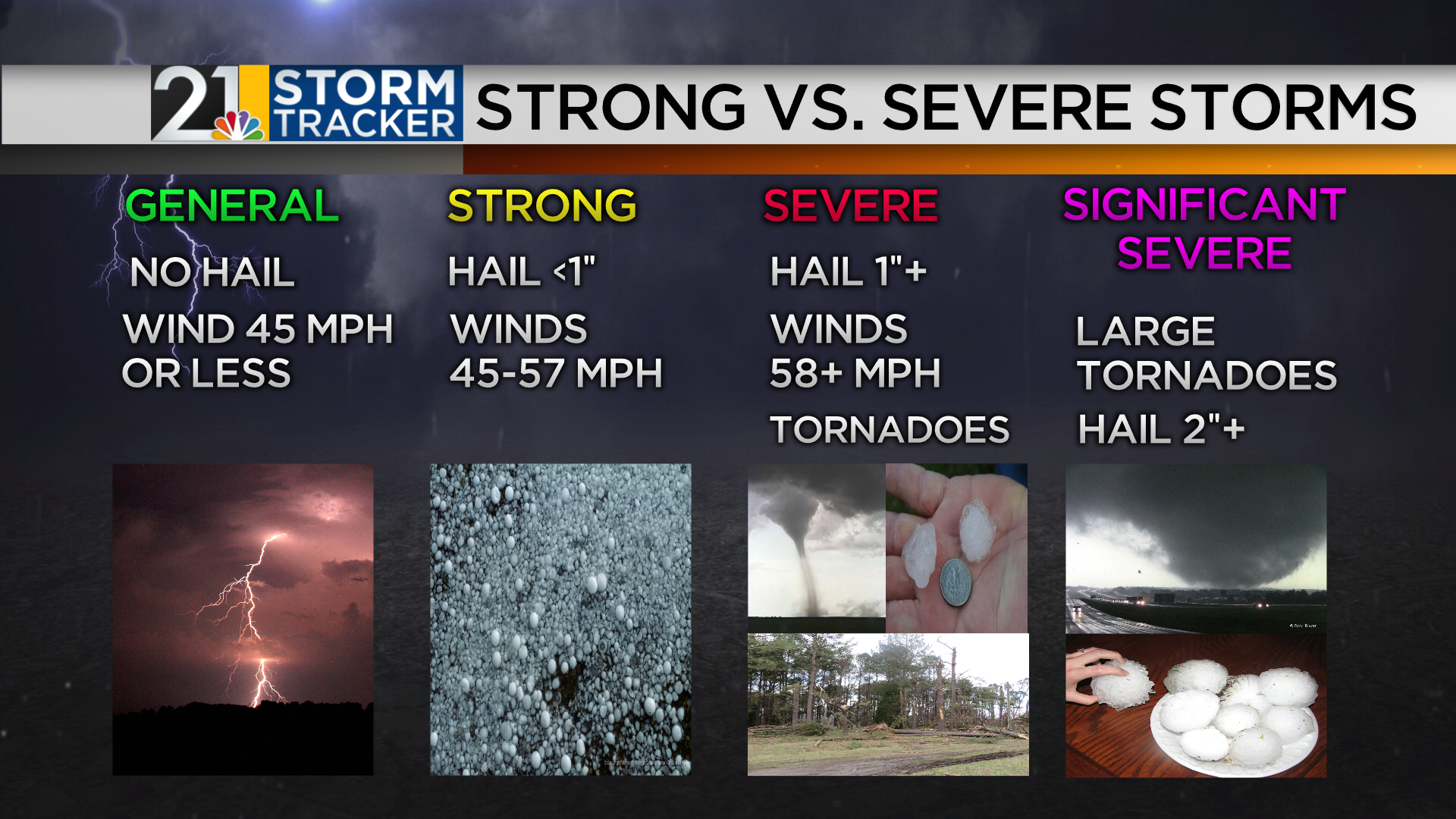It's Severe Weather Awareness Week: Let's Talk About It
IT’S SEVERE WEATHER AWARENESS WEEK IN THE STATE OF OHIO
In our current situation, the last thing anyone wants to be stressed about is the weather. But it IS Severe Weather Awareness Week, the week that we talk about all aspects of thunderstorms, flooding and tornadoes. This includes some reminders on what to when threatening weather is in our area.
WHAT IS A “SEVERE” THUNDERSTORM?
Any thunderstorm can be dangerous, but a “severe” thunderstorm does have a definition. Interestingly, amount of rain and frequency of lightning are not included in the definition. A storm is severe if it is producing large hail, very strong winds and/or a tornado.
WATCH VS. WARNING
Two of the more basic severe weather terms but they do trip people up. A Watch means conditions are favorable for some sort of severe weather. A Warning means that weather is occurring or about to occur. Put another way, a Watch means the ingredients are there. When you have sugar, flour and icing, it’s a Cupcake Watch. When those ingredients come together to make a cupcake, it’s a Cupcake Warning. Put another way:
TORNADOES
Tornadoes, thankfully, are pretty rare in our area….but they do happen. All the tornado touchdowns in our area since 1950:
Tornadoes can occur at ANY time of year (in 2019 we had a few in JANUARY) but our “tornado season” typically is thought of as late spring and early summer. Notice how the peak tornadic activity shifts closer to our area in May and June:
How do tornadoes form? It’s all about wind shear and instabilty. Wind shear is the change in wind direction and/or speed with height in the atmosphere. Instability is the ability for air parcels to rise quickly.
There are more myths about tornadoes than most other types of weather. Here are just a few:
How to stay safe when a tornado threatens? A basement is best but if you do not have one, find an interior room with no windows….you wan as many walls between you and the outside as possible. Live in an apartment building. Make friends with your first floor neighbors. Live in a mobile home? Have a plan for escaping that structure when severe weather threatens.
TORNADO SIRENS: STOP.RELYING.ON.THEM.
Time for my annual tornado siren rant. It’s 2020 and very VERY few people should be relying on World War 2 technology to alert them of severe weather. They are NOT designed to be heard indoors. They are not dependable. Local officials do not use the same guidelines for activating them. Need I go on?
Have a weather radio, have push alerts on your phone activated, pay attention to the TV and social media. But do not DO NOT base life-critical decisions on whether you do or do not hear a siren. Don’t be the commenter on my Facebook page who says “but I didn’t hear a siren!”. When I created the graphic below, I saved it as “SirensStink”. Enough said.
HAIL
Hail is much more common in our area than tornadoes but IMPACTFUL hail is fairly rare. Pea-sized hail does not hurt anything and usually we don’t see damage to cars and building until the hail is at least the size of quarters. That’s much more common across the Plains states but does occasionally happen here. Large hail can be particularly destructive if it’s accompanied by strong winds. That can blow those big stones into the side of your hours, breaking siding and windows.
LIGHTNING
Lightning is very dangerous and has to be taken seriously. “When thunder roars, head indoors”. If you are close enough to hear thunder, you are close enough to be struck by lightning. Most lightning victims are male and many fatalities occur near or on water.
Lightning can have either a positive or negative voltage. All lightning is dangerous by lightning that has a positive voltage, while less common, is particularly dangerous. Positive strikes have a higher voltage and tend to hit objects more often. “Bolts from the blue”, or strikes a long distance from the thunderstorm, are almost always positive voltage strikes.
Remember: “Heat Lightning” is not a thing! It’s just lightning that is too far away for thunder to be heard. Lightning can be seen up to 100 miles away but thunder can only be heard about 10 miles away.
FLOODING
Flooding is an “underrated” aspect of severe weather. Tornadoes and hail and lightning are “sexy” but flooding impacts more people (by far) annually. We’ve had big flooding problems in our area over the last couple of years. Climate change loads the dice in favor of more frequent extreme precipitation events. That does not mean they will occur every year but they will likely occur with more frequency than before man-made climate change became such a huge issue.
STAY SAFE!
Being prepared is the key to you and your family dealing with severe weather. Have a plan and make sure the kids understand what it is. This includes what part of the house to go to. A bike helmet is a great idea for protecting heads. Again, make sure you have MULTIPLE ways of receiving warnings and other important weather information. Use TRUSTED sources.
21 NEWS SEVERE WEATHER POLICY
When severe weather threatens, we are your go-to source of critical weather information. Just like every other station in the country, when there is an active Tornado Warning anywhere in our viewing area, we will be live on TV. No matter what show is supposed to be on! Often extended coverage on TV leads to complaints because people are missing their show and the threat is not in their neighborhood. Honestly, I pay little mind to those comments and e-mails. We are required by the FCC to provide life-saving information and that is what we are going to do!






















